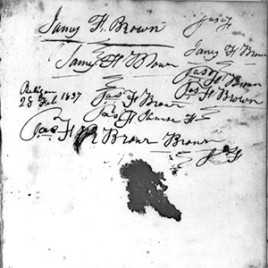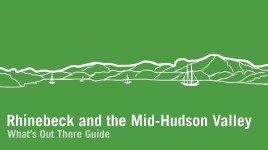Pioneer Information
Born into slavery, likely in Fredricktown, Maryland (now Frederick), Brown fled to New York City in 1826, where he was he was hired and manumitted by the Verplanck family. He relocated to Fishkill Landing (now Beacon) to work as a coachman, laborer, and gardener at the family’s Hudson River estate, Mount Gulian. Brown maintained an almanac-like diary from 1829 to 1866, detailing aspects of his life including agriculture, daily chores, the weather, and local events.
In 1836 Brown was promoted to head gardener and maintained the six-acre garden initially laid out in 1804, cultivating ornamental plants and produce, such as roses, grapes, magnolia, peach, plumb, and apricot trees. The garden also included wildflower specimens that Brown collected on walks. In 1836 he designed and installed a garden path and two years later created a pond by damming a brook. Brown managed the budget for the garden, traveling to regional nurseries to select and purchase plants. He was acquainted with pioneering landscape gardeners and horticulturists Andrew Jackson Downing and Henry Winthrop Sargent, in addition to other local horticulturists; frequenting nearby estates and gardens to trade, seeds, plants and knowledge. He visited the Downing family nursery in nearby Newburgh as both a client and guest, attending a gala in 1836. Brown displayed plants and produce on behalf of the Verplancks at numerous venues and events, including Downing’s 1839 “Horticultural Association for the Valley of the Hudson” show in Manhattan.
In 1836 Brown purchased a home in Fishkill Landing, granting him the right to vote. Brown contributed to African American orphan societies and helped establish an extant African American burial ground in Fishkill Landing in 1852. He retired from Mount Gulian in 1864 and passed away four years later at his home. He is interred in the cemetery of Beacon’s St. Andrew and St. Luke Episcopal Church.





